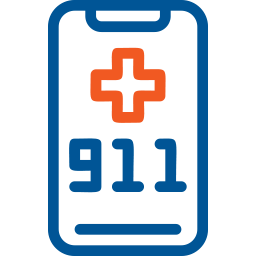ESIF develops Next Generation 9-1-1 (NG9-1-1) and location accuracy requirements and solutions and is where the industry comes together in a voluntary open forum to identify and resolve technical and operational issues to facilitate interconnection of emergency services networks with other networks (e.g., wireline, cable, satellite, Internet, etc.). ESIF members comprise industry, government, standards, and public safety organizations.
Subgroups
The ESIF Next Generation Emergency Services (NGES) subcommittee is leading a joint work effort that addresses the application of common IMS (Stage 1, 2, and 3) for the processing, transport, and/or delivery of Emergency Service calls within the NG9-1-1 network to the appropriate PSAP. This is a joint effort with the Packet Technologies and Systems Committee (PTSC) and the Wireless Technologies and Systems Committee Systems and Network Subcommittee (WTSC SN).
Leadership
ESIF NGES Co-Chairs
Mission:
The ESIF Next Generation Emergency Services & Messaging (NGESM) Committee develops standards and other documentation related to emergency services (i.e., E9-1-1 and Next Generation 9-1-1). This scope includes architectures, functions, and interfaces for communications networks. It also includes a set of minimum, practical requirements to ensure consistent, valid, verifiable, and reproducible location data in a variety of access environments based on sound engineering and statistical practice. NGESM also coordinates emergency services needs and issues with and among Standards Development Organizations (SDOs) and industry forums/committees, within and outside ATIS. The Committee has an emphasis on standards development as it relates to North American communication networks, taking into consideration alignment with standards developed by other ATIS committees (e.g., PTSC, WTSC) and other organizations such as ITU, 3GPP, ETSI and NENA.
Co-Chairs
Kelly Springer, AT&T
Jeanna Green, T-Mobile USA
Ed Amoah, Verizon Wireless
WTSC NSEP is comprised of members of WTSC RAN, ESIF NGES, and PTSC. The group will develop a joint study on Emergency Services and National Security/Emergency Preparedness Next Generation Network Priority Services (NS/EP NGN-PS) coexistence on LTE Radio Access Networks (RANs). This study will focus on how Emergency Services could potentially starve NS/EP NGN-PS communications during network degradation conditions (e.g., congestion and overload conditions during disaster events) and provide guidance to help mitigate the problem.
Leadership
WTSC RAN Chair and Vice-Chair
Joint project led by the WTSC Systems and Networks (SN) subcommittee and coordinated with ESIF’s Next Generation Emergency Services (NGES) subcommittee and the Packet Technologies and Systems Committee (PTSC) for an IMS-based Emergency Services Network. This work is currently focused on creating ATIS standards to eliminate VoLTE Unnecessary Retries to 911 and enhace location-based routing of emergency calls.
Leadership
WTSC SN Chair and Vice Chair

